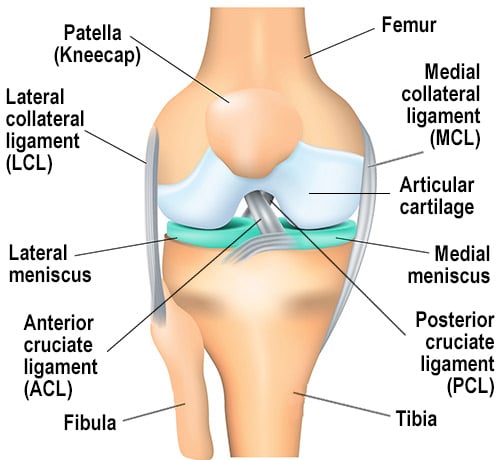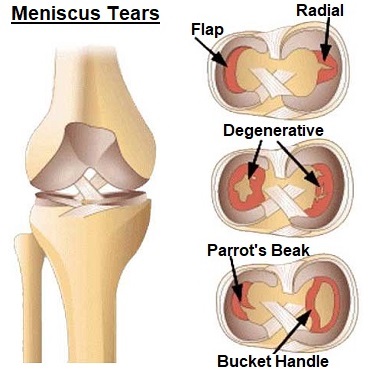Why Your Knee is Locking Up: A Comprehensive Guide to Causes and Treatment

Key points
- Inability to bear any weight on the affected leg.
- Severe or escalating pain and swelling.
- The knee remains locked and cannot be unlocked with gentle motion.
- You heard a loud "pop" at the moment of injury.
- Signs of infection, such as fever, redness, or warmth around the knee.
That sudden, jarring sensation when your knee gets stuck, refusing to bend or straighten, is more than just an inconvenience—it can be painful and deeply unsettling. This experience, known as a "locked knee," is a common complaint that can stem from a variety of causes, ranging from a minor muscle spasm to a significant joint injury.
Understanding why your knee is locking is the first step toward finding relief and preventing it from happening again. This comprehensive guide will walk you through the different types of knee locking, their common causes, and the full spectrum of treatment options, from at-home care to advanced medical procedures.
Understanding Knee Locking: Is It a True Block or a Pain Response?
The first crucial step in diagnosing a locked knee is to determine whether you are experiencing a true mechanical lock or a "pseudo-lock." While they feel similar, their underlying causes and treatments are very different.
What is True Mechanical Knee Locking?
True knee locking occurs when a physical object inside the knee joint mechanically blocks its movement, much like a pebble jamming a door hinge. The knee becomes physically stuck in one position, and no amount of effort can move it past that point. This blockage is often caused by a displaced piece of tissue or bone.
What is Pseudo Knee Locking?
Pseudo-locking is the sensation of the knee being locked, but without a physical obstruction. The immobility is actually a protective response from your body. Severe pain from an injury or inflammation can trigger intense muscle spasms around the knee, causing it to seize up to prevent further damage. The knee isn't truly blocked, but the pain and muscle guarding make it feel that way.
| Feature | True Mechanical Locking | Pseudo Locking |
|---|---|---|
| Primary Cause | Physical obstruction (e.g., torn cartilage, loose bone fragment) | Severe pain and protective muscle spasms |
| Sensation | Feeling of something physically catching or blocking the joint | A general inability to move due to intense pain or stiffness |
| Movement | The knee is stuck at a specific angle and cannot be moved further | Range of motion may be restored if pain and spasms ease |
| Onset | Often sudden, may occur with a "pop" or "click" | Can develop gradually with increasing pain and inflammation |
Common Causes of a Locked Knee
The cause of your locked knee is directly related to whether it is a true mechanical block or a pseudo-lock.
Causes of True Mechanical Locking
 Anatomy of the knee joint. The menisci (highlighted) are crucial for cushioning and stability. Source: HSS.edu
Anatomy of the knee joint. The menisci (highlighted) are crucial for cushioning and stability. Source: HSS.edu
Meniscus Tears
This is the most common cause of true knee locking. The meniscus is a C-shaped piece of tough cartilage that acts as a shock absorber between your shinbone and thighbone. A specific type of injury called a "bucket-handle tear" can cause a large, flap-like piece of the meniscus to flip into the joint, physically blocking movement. Such tears often result from forceful twisting or pivoting motions common in sports.
Loose Bodies
Fragments of bone or cartilage can break off due to a traumatic injury, degenerative conditions like osteoarthritis, or osteochondritis dissecans. These "loose bodies" can float within the joint fluid and become lodged between the moving parts of the knee, causing it to lock up suddenly.
Ligament Injuries
While less common, a severe injury like a complete tear of the Anterior Cruciate Ligament (ACL) can sometimes cause locking. The torn stump of the ligament can get caught in the joint, creating a mechanical block.
Causes of Pseudo Locking
Arthritis
Osteoarthritis, the "wear-and-tear" form of arthritis, is a primary cause of pseudo-locking, especially in older adults. As cartilage breaks down, the resulting pain, inflammation, and stiffness can trigger muscle spasms that immobilize the joint.
Plica Syndrome
The plica is a fold in the thin tissue lining your knee joint. If this tissue becomes irritated and inflamed from overuse or injury, it can cause pain, a catching sensation, and the feeling of a locked knee.
Patellar Maltracking
This condition occurs when the kneecap (patella) shifts out of its normal alignment as you bend or straighten your leg. The abnormal movement can cause significant pain and a sensation of the knee catching or getting stuck.
Severe Pain and Swelling
Any acute knee injury that causes significant pain and swelling can lead to pseudo-locking. It is the body's natural defense mechanism to prevent movement and protect the injured joint from further harm.
When to See a Doctor: Red Flags You Shouldn't Ignore
While some minor instances of knee locking might resolve with gentle movement, certain symptoms warrant immediate medical attention. Contact a doctor or visit an urgent care facility if you experience:
- Inability to bear any weight on the affected leg.
- Severe or escalating pain and swelling.
- The knee remains locked and cannot be unlocked with gentle motion.
- You heard a loud "pop" at the moment of injury.
- Signs of infection, such as fever, redness, or warmth around the knee.
Diagnosis: How a Doctor Determines the Cause
To provide the right treatment, your doctor must first pinpoint the cause of the locking. A thorough diagnosis typically involves:
- Medical History: Your doctor will ask about your symptoms, how the locking started, and any previous injuries.
- Physical Examination: The doctor will assess your knee for swelling, tenderness, and range of motion. They may perform specific maneuvers, like the McMurray test, to check for a meniscal tear.
- Imaging Tests:
- X-rays: These are used to identify bone-related issues like fractures, loose bone fragments, or signs of advanced arthritis.
- MRI (Magnetic Resonance Imaging): An MRI provides detailed images of the knee's soft tissues, making it the best tool for diagnosing meniscus tears, ligament damage, and other cartilage issues.
 Different types of meniscus tears can cause locking, with the bucket handle tear being a classic example. Source: Knee-Pain-Explained.com
Different types of meniscus tears can cause locking, with the bucket handle tear being a classic example. Source: Knee-Pain-Explained.com
Treatment and Relief for a Locked Knee
Treatment is tailored to the underlying cause, severity, and type of knee locking.
Immediate At-Home Care: How to Safely Unlock Your Knee
If you experience a locked knee, the most important rule is do not force it. Forcing the joint could worsen an injury. You can try these gentle methods for relief:
- Gentle Movement: Sit down and relax your leg muscles. Slowly and gently try to bend and straighten the knee. A gentle hamstring stretch may also help ease tension.
- Heat and Ice Therapy: Apply a heat pack for 15 minutes to help relax the surrounding muscles. If there is swelling, switch to an ice pack for 15-20 minutes to reduce inflammation.
- The RICE Method: If the locking is due to an injury, follow the RICE protocol:
- Rest: Avoid activities that cause pain.
- Ice: Apply a cold pack to reduce swelling.
- Compression: Use an elastic bandage to provide support and control swelling.
- Elevation: Keep the leg raised above heart level.
- Over-the-Counter Medication: Nonsteroidal anti-inflammatory drugs (NSAIDs) like ibuprofen can help manage pain and reduce inflammation.
Professional Medical Treatments
If at-home care isn't effective, a doctor may recommend one of the following treatments.
Physical Therapy
A physical therapist can guide you through exercises to strengthen the muscles that support the knee (like the quadriceps and hamstrings), improve flexibility, and restore your full range of motion. This is a cornerstone of treatment for many causes of locking, especially patellar maltracking and recovery from injury.
Medications and Injections
For pseudo-locking caused by inflammation from conditions like arthritis or plica syndrome, your doctor may recommend stronger anti-inflammatory medications or a corticosteroid injection directly into the knee joint to provide powerful, targeted relief.
Surgical Options
Surgery is typically reserved for cases of true mechanical locking that don't resolve with conservative treatment.
- Arthroscopy: This minimally invasive procedure is the standard for treating meniscus tears and removing loose bodies. A surgeon makes small incisions to insert a tiny camera and specialized tools to repair or trim the torn meniscus or remove the fragments causing the block.
- Ligament Reconstruction: For locking caused by a torn ACL, surgery may be needed to reconstruct the ligament.
- Knee Replacement: In cases of severe, end-stage arthritis where the joint is badly damaged, a partial or total knee replacement may be the best option for long-term pain relief and function.
Long-Term Management and Preventing Recurrence
Once the immediate issue is resolved, the focus shifts to preventing future episodes.
- Strengthen Supporting Muscles: A consistent exercise program focused on your quadriceps, hamstrings, glutes, and core is the most effective way to stabilize the knee joint and prevent re-injury.
- Maintain a Healthy Weight: Every extra pound of body weight adds about four pounds of pressure on your knees. Losing excess weight can significantly reduce stress on the joints and lower your risk of conditions like osteoarthritis.
- Practice Smart Movement: Warm up properly before exercise and cool down afterward. Avoid sudden, forceful twisting movements that put the knee in a vulnerable position.
- Manage Chronic Conditions: If arthritis is the cause, work with your doctor on a long-term management plan that may include medication, lifestyle changes, and regular, low-impact exercise like swimming or cycling.
By understanding the signals your body is sending and seeking appropriate care, you can effectively manage a locked knee and take proactive steps to keep your joints healthy and mobile for years to come.
References
- Medical News Today. (2019). Locked knee: Causes, symptoms, and treatment. Link
- OrthoNeuro. (n.d.). 7 Main Causes of Locked Knees. Link
- Ronak Mukesh Patel MD. (2024). Knee Popping, Locking, Buckling, and Giving Out. Link
- Hospital for Special Surgery (HSS). (2024). Meniscus Tear: Symptoms & Treatment. Link
- WebMD. (n.d.). Knee Osteoarthritis. Link

About the author
Samuel Jones, MD, is a board-certified orthopedic surgeon specializing in joint replacement and orthopedic trauma. He is a team physician for a professional sports team and practices at a renowned orthopedic institute in Georgia.